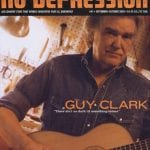Turn! Turn! Turn! The ’60s Folk-rock Revolution
Richie Unterberger has uncorked a formidable task, for “folk-rock” is a problematic category. Many have difficulty accepting it as an idiom or movement in and of itself. When the term is adopted, it tends to have a catholic reach, gathering artists as diverse as the Byrds, Bob Dylan, Sonny & Cher, the Turtles, the Mamas & Papas, the Leaves, Love, Barry McGuire and countless others within its hazy borders.
Compounding the complexity, the influence of folk music on rock represents a sea change in ’60s popular music itself, and not some narrowly defined movement. As Unterberger points out, by the end of the decade “it was so entrenched within popular music that hardly anyone was even bothering to call it folk-rock anymore. [It had] become, to a large extent, the sound of rock music.” Nevertheless, he has done an admirable job weaving together diverse strands culled from a daunting number of interviews and extensive research.
Scope and breadth may be not only the book’s greatest attribute but also the thorniest challenge for its readers. In tracing folk-rock’s initial impact (1965-66), Unterberger is forced to deal with such weighty, lore-heavy facets as the ’65 Newport Folk Festival, the early ’60s folk boom, the impact of the Beatles, the rise of the Byrds and, of course, the omnipresent specter of Bob Dylan. And those are only the key elements; surrounding ephemera includes music publications (such as Broadside and Sing Out!), the popularization of the 12-string Rickenbacker, studio tales, resistance from folk purists, and the work of numerous artists associated both peripherally and centrally with folk-rock.
Unterberger’s ability to digest the frenzy is remarkable. As for the “genre” itself, the reader must suspend the need for clear definition. Folk-rock, we find, is much more than a simple marriage between rock ‘n’ roll forms and sophisticated, topical lyrics. (How else does one explain such lyrically lightweight folk-rock fare as the Lovin’ Spoonful’s “Do You Believe In Magic”?) The movement can also be defined by sound, often characterized by “heavy reliance on minor chords,” “resonant and forlorn vocals,” vocal harmonies, and “above all the mix of folky acoustic guitars with electric ones.”
These amorphous borders also lead Unterberger to deal with “artists who have never been defined as folk-rockers, but [who] were strongly influenced by folk rock.” Though this leads to interesting discussions — as in how the Beatles impacted folk-rockers and in turn drew influence from them (particularly on Rubber Soul) — it furthers the problem of scope.
The sheer volume of material sometimes forces the author into capsule rundowns on the careers of important artists; the text often skims over artists and events in breathless succession. Fragmenting the focus are occasionally questionable digressions on artists such as Manfred Mann, who crop up not because they’re “folk-rockers”, but because they had hits with Dylan songs. The colorful socio-political landscape upon which folk-rock blossomed is mentioned at times, but overall gets short shrift.
What makes Turn! Turn! Turn! invaluable, however, is the insight gained from interviews with key players and witnesses, including Dylan session guitarist Bruce Langhorne, Sing Out! editor Paul Nelson, and filmmaker D.A. Pennebaker. They further flesh out the picture offered by more typical suspects such as Roger McGuinn and Denny Doherty. The author’s ability to weave these commentaries together, and to allow them to give voice to the narrative, is one of his prime strengths.
Unterberger has gathered so much material, in fact, that a second volume, Eight Miles High: Folk-Rock’s Flight From Haight-Ashbury To Woodstock (scheduled for 2003), will continue the saga. (Turn! Turn! Turn! ends with Dylan’s motorcycle accident and subsequent seclusion.) Ultimately, Unterberger’s achievement is not simply in tracing a movement, but in diligently and insightfully encapsulating the warp-speed changes in pop music circa 1965-66.




